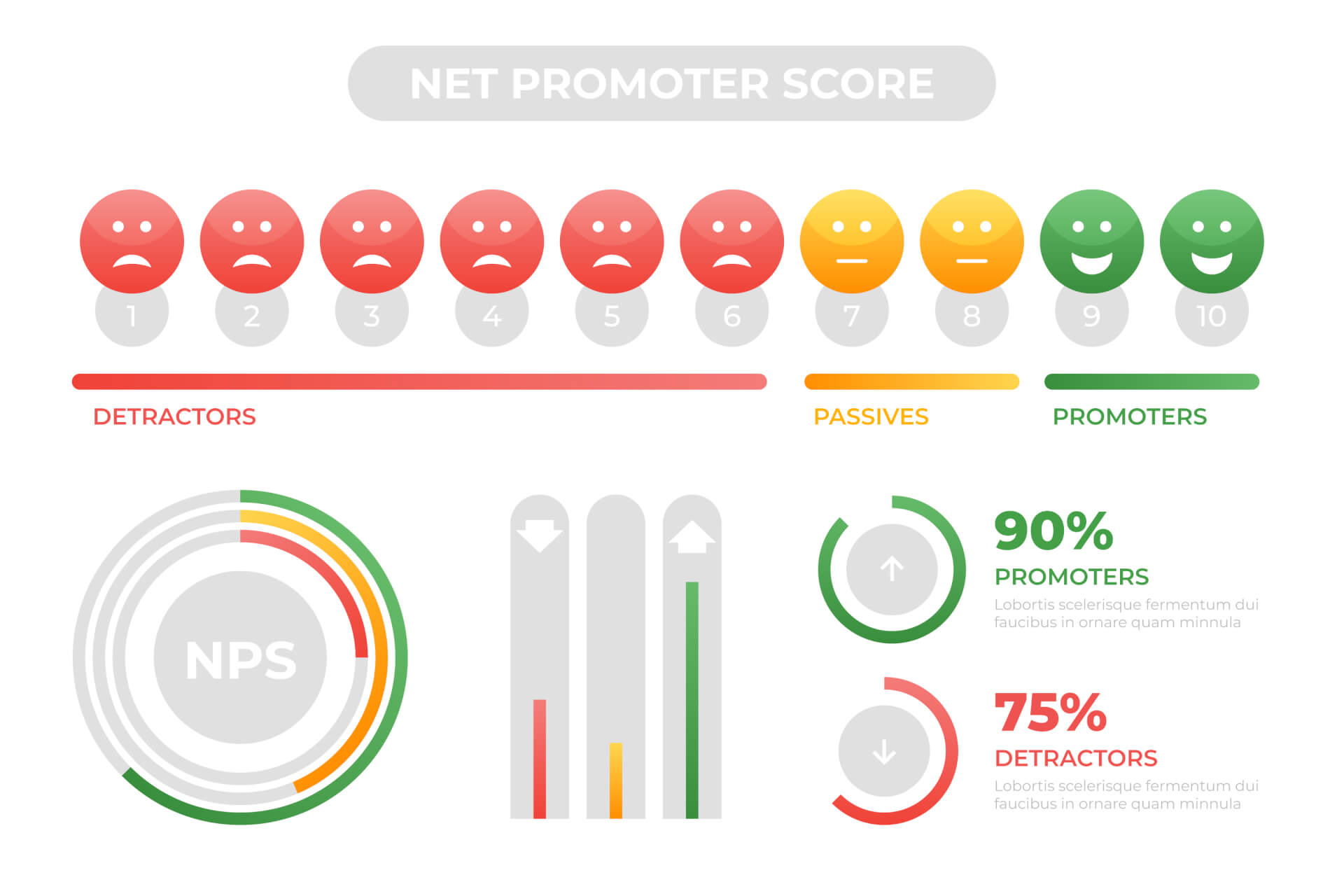Net Promoter Score (NPS) and customer feedback serve as vital tools in gauging customer satisfaction and loyalty. This article delves into the significance of NPS and customer feedback, exploring their impact on business success.

Table of Contents
- History and Development of NPS
- Types of Customer Feedback
- Collecting Customer Feedback
- Benefits of NPS and Customer Feedback
- Challenges in Gathering Customer Feedback
- Using Customer Feedback for Product Development
- Improving Customer Experience with Feedback
- Overcoming Challenges in Customer Feedback Collection
- Setting NPS Goals
- Implementing NPS in Your Business
- Future of NPS and Customer Feedback
History and Development of NPS
 NPS was introduced by Fred Reichheld in 2003 through his Harvard Business Review article, "The One Number You Need to Grow." It was developed as a straightforward and effective way to measure customer loyalty and predict business growth.
NPS was introduced by Fred Reichheld in 2003 through his Harvard Business Review article, "The One Number You Need to Grow." It was developed as a straightforward and effective way to measure customer loyalty and predict business growth.
If you want to know more about the basics of the Net Promoter Score, how it is calculated and how the survey is structured, please have a closer look at our introduction article "The Net Promoter Score – basics and areas of application" before you continue reading.
Types of Customer Feedback
- Direct Feedback
Direct feedback is obtained through structured methods such as surveys and questionnaires, where customers explicitly share their opinions. - Indirect Feedback
Indirect feedback is gathered from customers' interactions and behaviors, such as their activity on a website or their purchase history. - Unsolicited Feedback
Unsolicited feedback includes comments and reviews that customers provide without being prompted, often found on social media or review platforms.
Collecting Customer Feedback

Surveys and Questionnaires
Surveys and questionnaires are the most common methods for collecting structured customer feedback. They can be distributed via email, website pop-ups, or in-app prompts.
Social Media Monitoring
Monitoring social media channels allows businesses to gather real-time feedback from customers, helping them understand public perception and address issues promptly.
Customer Reviews and Ratings
Online reviews and ratings provide valuable insights into customer satisfaction and product performance. Platforms like Yelp, Google Reviews, and Amazon are rich sources of customer feedback.
Focus Groups and Interviews
Focus groups and interviews provide in-depth feedback and a deeper understanding of customer attitudes and experiences. These methods are particularly useful for new product development and market research.
Benefits of NPS and Customer Feedback

Improving Customer Satisfaction
Regularly collecting and analyzing customer feedback helps businesses identify areas for improvement, leading to enhanced customer satisfaction.
Enhancing Customer Loyalty
NPS helps in identifying loyal customers (Promoters) who are more likely to make repeat purchases and recommend the brand to others, thereby increasing customer loyalty.
Identifying Strengths and Weaknesses
Feedback highlights what customers love about your product or service and what needs improvement, enabling businesses to focus on their strengths and address weaknesses.
Driving Business Growth
Satisfied and loyal customers drive business growth through repeat purchases and referrals, making NPS and customer feedback critical components of a growth strategy.
Challenges in Gathering Customer Feedback
- Low Response Rates
One of the biggest challenges in collecting customer feedback is achieving a high response rate. Many customers may ignore surveys or questionnaires. - Biased Responses
Feedback can sometimes be biased, either positively or negatively, which may not accurately represent the overall customer base. - Data Privacy Concerns
Collecting feedback involves handling sensitive customer data, raising concerns about privacy and data protection. - Analyzing Large Volumes of Data
Processing and making sense of large volumes of feedback data can be overwhelming without the right tools and expertise.
Using Customer Feedback for Product Development

Gathering Feedback on Product Features
Collecting specific feedback on product features helps in understanding customer needs and preferences.
Identifying Market Needs
Analyzing feedback trends can reveal unmet market needs and opportunities for new products or services.
Testing Prototypes with Customers
Involving customers in the prototype testing phase ensures that the final product meets their expectations and requirements.
Incorporating Feedback into Product Design
Using customer feedback to inform product design leads to more user-friendly and successful products.
Improving Customer Experience with Feedback

Mapping the Customer Journey
Creating a detailed map of the customer journey helps in identifying key touchpoints where feedback can be collected and used to enhance the experience.
Identifying Pain Points
Feedback helps in pinpointing specific pain points in the customer journey that need to be addressed.
Personalizing Customer Interactions
Using feedback to personalize customer interactions can significantly improve satisfaction and loyalty.
Enhancing Customer Support
Continuous feedback helps in identifying areas for improvement in customer support, leading to better service and happier customers.
Overcoming Challenges in Customer Feedback Collection

Best Practices for Increasing Response Rates
To boost response rates, keep surveys short, offer incentives, and send reminders. Personalizing the survey request can also make a significant difference.
Ensuring Unbiased Feedback
To minimize bias, ensure that surveys are anonymous and questions are neutral. Random sampling can also help in getting a more representative feedback.
Addressing Privacy Concerns
Implementing robust data protection measures and being transparent about how customer data will be used can help address privacy concerns.
Effective Data Analysis Techniques
Using advanced data analytics tools and techniques, such as sentiment analysis and machine learning, can help in efficiently analyzing large volumes of feedback data.
Setting NPS Goals
Setting clear, achievable NPS goals helps in tracking progress and motivating teams to improve feedback and therefore as a result your customer satisfaction and loyalty.
- Training Staff on NPS
Training staff on the importance of NPS and how to interact with customers based on their feedback is crucial for a successful implementation. - Integrating NPS with Other Metrics
Combining NPS with other metrics like Customer Satisfaction Score (CSAT) and Customer Effort Score (CES) provides a more comprehensive view of customer sentiment.
Implementing NPS in Your Business
Steps to Introduce NPS:
- Understand NPS: Educate your team about NPS and its importance.
- Choose the Right Tool: Select an NPS software or tool that fits your business needs.
- Set Up Surveys: Design and implement NPS surveys.
- Collect Responses: Gather and monitor customer responses.
- Analyze Data: Analyze the NPS data to gain insights.
- Act on Feedback: Use the insights to make informed business decisions.
If you are looking for a more detailed information on how to implement, setup and utilize NPS in your business, please have a closer look at our article "How to Implement NPS in Your Company"
Future of NPS and Customer Feedback

Emerging Technologies in Feedback Collection
New technologies like AI and machine learning are transforming how businesses collect and analyze customer feedback.
Predictive Analytics for Customer Feedback
Predictive analytics helps in anticipating customer needs and proactively addressing potential issues.
The Evolving Role of AI in Customer Feedback
AI is increasingly being used to analyze feedback data, providing deeper insights and more accurate predictions.
Future Challenges and Opportunities
While new technologies offer exciting opportunities, they also pose challenges such as data privacy concerns and the need for continuous adaptation.
Conclusion
NPS and customer feedback are crucial for understanding customer sentiment, improving satisfaction, and driving business growth. Regularly collecting and acting on customer feedback is essential for sustained success and competitiveness.
Businesses should prioritize customer feedback as a strategic asset, using it to inform decisions and enhance the overall customer experience.
 Reading recommendation: If this article helped you and you would like to find out more about the Net Promoter Score, continue reading here: “The Net Promoter Score – Basics and Areas of Application”
Reading recommendation: If this article helped you and you would like to find out more about the Net Promoter Score, continue reading here: “The Net Promoter Score – Basics and Areas of Application”